Wooden shutters as a window dressing solution
Long ago before homes had glass windows, a form of early shutters were used – propping up wooden boards in window openings. Hundreds of years later and wooden shutters remain one of the most popular form of window dressing. Bright and bold or simply stained, shutters are also practical and easy to maintain. Louvred slats can be adjusted to reduce or improve light flow and shutter panels can be swung in various formations to provide style and flexibility.
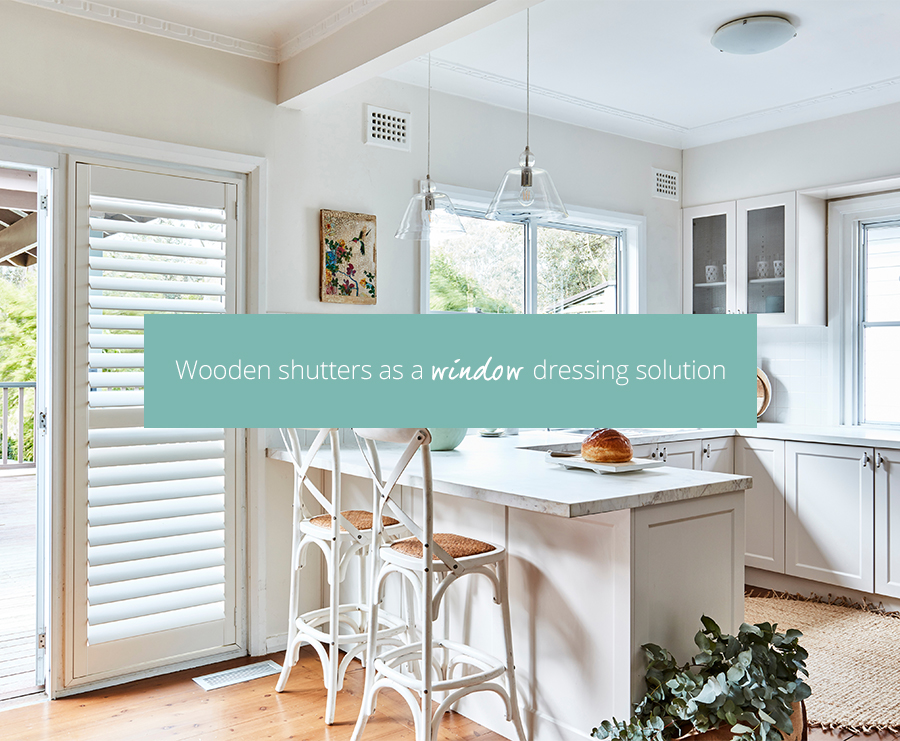
Often associated with warmer climates, shutters work just as well in the UK, keeping interiors well insulated when cold as well as cool when warmer. Wooden shutters are easy to keep clean and provide plenty of light and airflow as well as privacy, which are key factors when considering window dressings in a kitchen.
As with any bespoke product, understanding lead time is important. Most shutter styles can be produced within 8-12 weeks with online express services often shortened to 3-6weeks. Some companies will have consultants who provide home visits to take measurements and discuss the various styles, fittings, and colours while others rely entirely on homeowners to provide their measurements.
The most popular style currently is tier-on-tier shutters where the upper set of louvres can be opened and closed independently of the lower set.
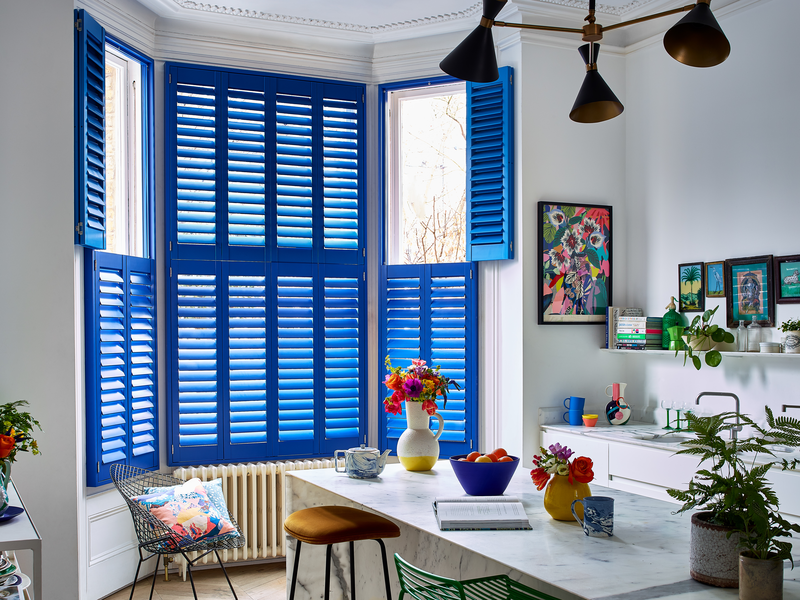
Full height shutters cover the entire kitchen window opening giving a stylish look to the room. Not just for windows, these also finish off kitchen patio doors well.
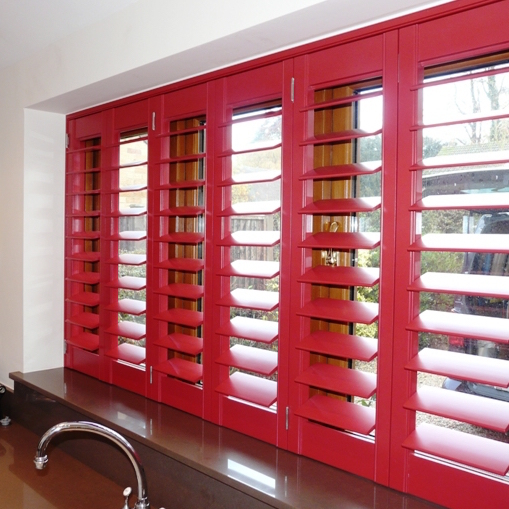
Café-style shutters are a great option, especially when fitted to windows above a sink. They retain privacy at the lower level, allowing light to flow freely above.
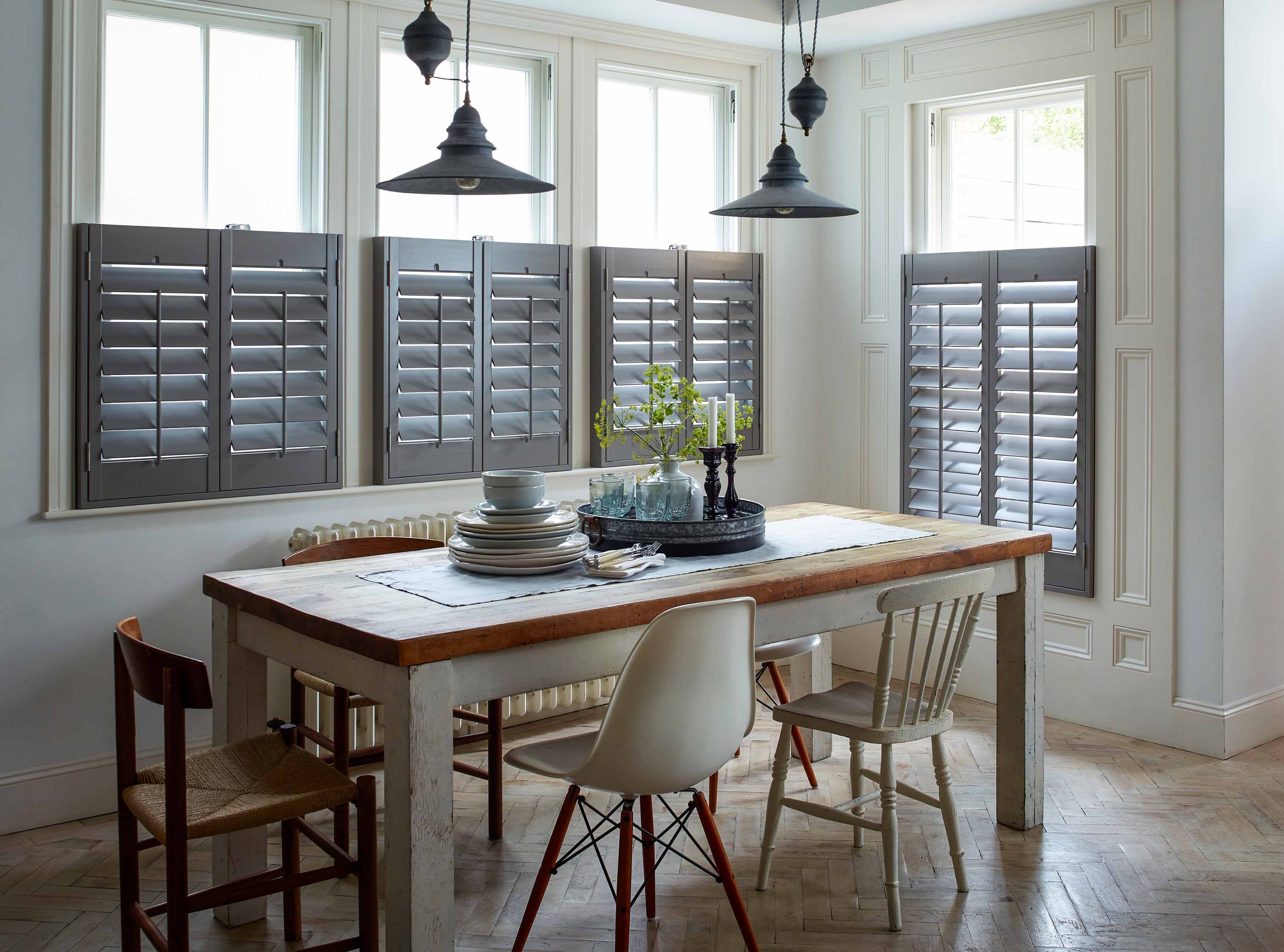
Solid-panel shutters offer a more traditional look but at the same time can be very decorative.
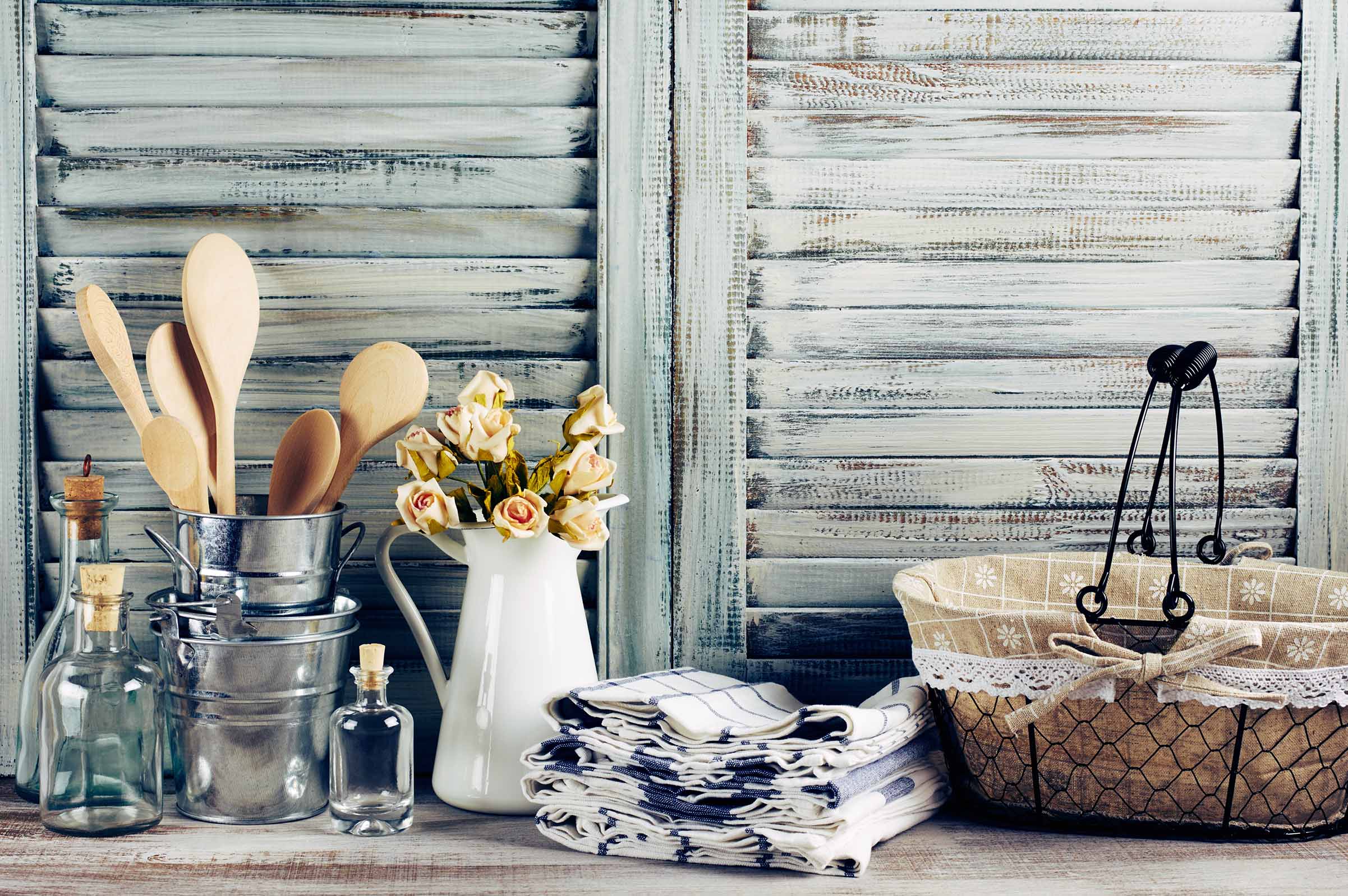
In addition to the shutters themselves, decisions must be made regarding the tilt rod mechanism which is responsible for opening the louvres themselves. The usual option is a push rod at the front of the shutters; however, an alternative option is the hidden rod which provides a sleeker look. Shutters don’t need a cord, unlike many other window dressings, so are a safe option for homes with children. UV-protective staining is also an option to help keep the appearance and quality of the shutters. A vinyl seal finish is sensible for shutters being fitted above, or near a sink to ensure that they are waterproof – it also prevents the wood from warping or rotting.
When it comes to the question of cost, all the elements above need to be taken into consideration. Shutter pricing is mainly determined by shape and size as well as the wood used. Natural wood, such as elm or birch for example, will understandably be more expensive than hardwood or MDF. Add a UV-protective stain and the price will increase further.
With so many different kitchen styles, layouts and designs, the range of shutter styles, colours and finishes has also expanded in recent years to include wood stained, whitewashed and bold colours. Whether you’re looking for a classic, natural, or more contemporary look, there will, without doubt, be a wooden shutter to suit.
11th Oct 2021The Compare Network
Copyright – Insight Retail Group Ltd 2025 All rights reserved